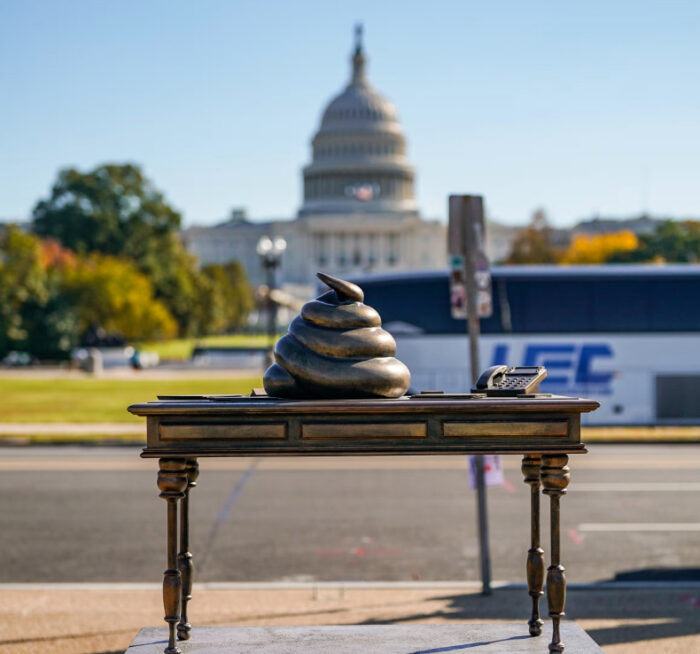
An unusual anti-Trump art installation appeared on the National Mall this week, bringing both satire and controversy to Washington’s iconic public space. Created by Julia Jimenez-Pyzik, the piece is an unambiguous critique of the January 6 Capitol riots, featuring a bronze model of what is purported to be Nancy Pelosi’s desk topped by a grotesque mound of excrement. The piece, named “The Resolute Desk,” directly references the former president’s encouragement of the rioters, with a satirical plaque commemorating their “daring sacrifice” during the Capitol breach—a statement that underscores the work’s biting irony and pointed criticism of political violence and its ongoing ramifications.
Placed conspicuously within view of the U.S. Capitol, the installation received a permit from the National Park Service (NPS), allowing it to remain on display until October 31. Its presence on federal land is especially notable given the timing, less than two weeks before the upcoming U.S. election, which has heightened the sculpture’s impact as a provocative reminder of the events of January 6. The artist’s choice of material and site, along with the boldness of her commentary, demonstrates a powerful form of political art meant to evoke reflection and spark debate among visitors.
The display has drawn both amusement and criticism. Some view it as a necessary satire in an era of divisive politics, while others see it as an incendiary statement in a public space. By embodying the chaotic and destructive aspects of the Capitol riot, Jimenez-Pyzik’s work raises questions about accountability, heroism, and the boundaries of patriotism—a commentary as much about Trump-era politics as it is a reflection on how art intersects with public and civic life.
Ultimately, the sculpture underscores art’s role as a vehicle for social critique, especially in the United States’ charged political climate. Whether praised or condemned, “The Resolute Desk” is a reminder of the political power art holds, particularly when positioned within a historical landscape like the National Mall. The piece’s stark imagery and layered commentary leave a resonant message about memory, trauma, and the symbols we choose to enshrine—or defile—in the American narrative.
